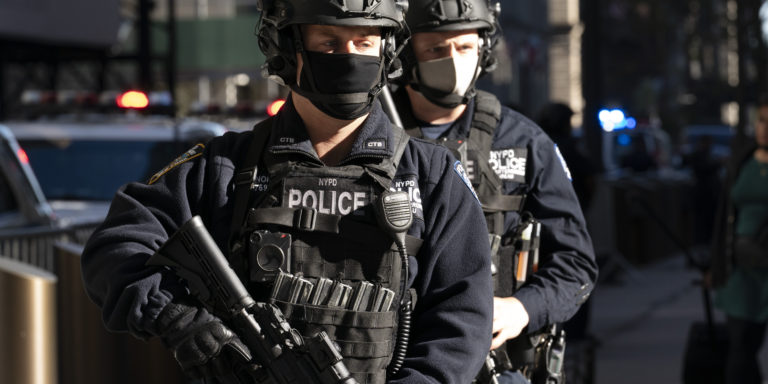INTELBRIEF
January 4, 2021
IntelBrief: New Year, New International Counterterrorism Landscape

Bottom Line Up Front
- 2021 will present the international community with a number of key opportunities to assess and shape – or reshape – responses to terrorism.
- Few states put the UN at the center of their counterterrorism agenda, but several have identified comparative advantages that multilateral actors offer.
- Later this year, UN Security Council members will negotiate a new mandate for the Counter-Terrorism Executive Directorate, tasked with identifying capacity-gaps and emerging trends, among several other high-level priorities.
- U.S. choices about how to manage foreign policy challenges will shape the international counterterrorism landscape in 2021.
The year 2021 will present the international community with a number of key opportunities to assess and shape – or reshape – responses to terrorism. As the Biden-Harris administration assumes office in January, there is much optimism that there will be a renewal of multilateral engagement and an improved relationship with the United Nations and its members. Following the attacks of September 11, 2001, the United States was the key architect of the UN’s counterterrorism (CT) framework in the Security Council. As the twentieth anniversary of the attacks approaches, there are two possible ways the U.S. will engage the UN: by renewing and ramping up political and financial support to UN counterterrorism bodies; and/or by forging more proactive partnerships with France and the UK to balance out an increasingly active China and Russia on the multilateral counterterrorism scene. However, the incoming administration will also face a number of key foreign policy challenges, against the background of the devastating fallout of the pandemic, which makes it possible that fewer counterterrorism resources will be directed to the UN.
Few states put the UN at the center of their counterterrorism responses, but several have identified some important comparative advantages that the UN and other multilateral actors can offer. First, it provides a platform for international legal and operational cooperation. Second, it can be a vehicle for technical assistance and pooling resources across donors. Third, it has an unparalleled convening power and can bring together experts, governments, and researchers to share knowledge and good practices. Moreover, in many places, the legitimacy associated with the blue flag and its ability to assemble states despite difficult bilateral or regional relationships creates unique opportunities for dialogue and partnership with and among states. Finally, through a network of field-based offices, it has the proximity to communities and partners needed to take more credible and sustainable action. In 2021, because of delays owing to COVID, two key CT negotiations will allow states to reconsider the UN’s role in counterterrorism, but also the bureaucratic setup that underpins it.
During the summer, the General Assembly will negotiate a biennial review of the UN Global Counterterrorism Strategy. While it is not a binding resolution, it has several operational implications. The Strategy’s focus on prevention allows a number of UN entities to implement projects that contribute to wider CT and prevention efforts. It also provides a mandate and guidance to the UN Office of Counter-Terrorism, the central hub of UN CT technical assistance, and for its relationship to Security Council Bodies. Later in the year, Security Council members will negotiate a new mandate for the Counter-Terrorism Executive Directorate (CTED), tasked with assessing compliance with Security Council legal obligations and identifying capacity-gaps and emerging trends. As such, 2021 will allow states to assess not only the content of UN counterterrorism policy, but also consider whether the bureaucratic architecture is fit for purpose. Several reports and recommendations have already been directed at the UN on the CT front, stressing the importance of greater transparency, an emphasis on human rights, humanitarian action, and a meaningful integration of gender. While there has traditionally been consensus on the need to counter terrorism, a fractious relationship among the P5 – namely the U.S., Russia, China, UK, and France – on issues like Syria and Iran, for example, and on geopolitical dynamics beyond, can compromise that. Additionally, an incoming set of new Council members like India and Kenya are likely to have their own strong views on CT, as will many in the General Assembly, like Egypt, Pakistan, EU members and ’Five Eyes’ states.
Beyond the UN, the Global Counter-Terrorism Forum (GCTF), established under the auspices of then-Secretary of State Hillary Clinton, will have new opportunities with Canada and Morocco as Co-Chairs. Where frustrated by the UN, the U.S. may simply ramp up its engagement and support to the GCTF and its associated institutions. Through this channel, the U.S. could ensure that its resources are nimbly directed to address emerging terrorist threats, like violent right-wing extremists, racially and ethnically motivated terrorism, and rehabilitating and reintegrating terrorist detainees and their family members, alongside current priorities. Additional attention should be paid to the proliferation of online harms emerging from several months of quarantines with people spending more time online and the proliferation of disinformation. International organizations, while often operating in their own particular sphere, are not insulated from geopolitical dynamics and changes to U.S. leadership. Over the past two decades, the UN framework has been an important counterpoint to the excesses of the ‘War on Terror’ approach, stressing prevention, human rights, the rule of law, and civil society engagement. U.S. choices about how to manage foreign policy challenges like Iran, Afghanistan, North Korea, and Somalia, and difficult but important relationships with China and Russia, will shape the international counterterrorism landscape in 2021.